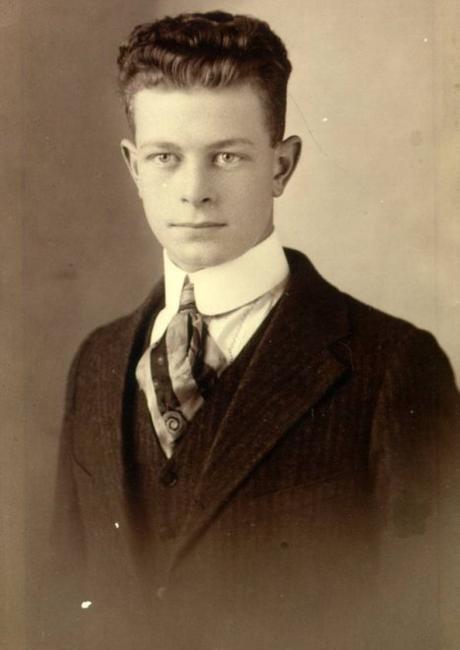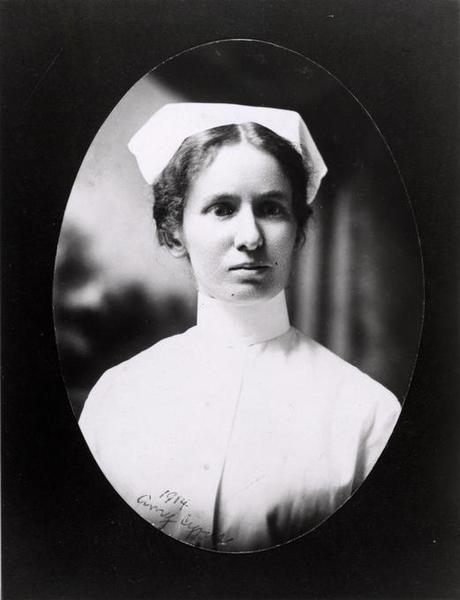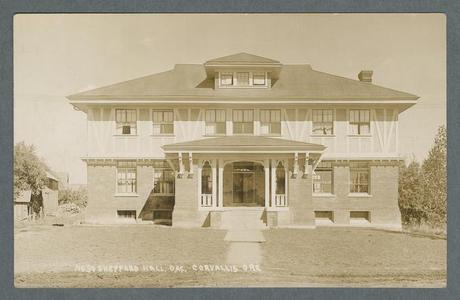 Linus Pauling, 1918.
Linus Pauling, 1918.[Ed Note: School is underway here at Oregon State University, and as has become tradition for us, next week we will begin an investigation of Linus Pauling’s undergraduate experience from 100 years ago, the 1920-1921 academic year. Today however, we take a closer look at life on campus a few years before; a time period also clouded by a pandemic, and a moment in history that Pauling shared with about 4,000 other students enrolled at OAC. An earlier version of this post originally appeared on our sister blog, Speaking of History, in May 2020.]
As Oregon Agricultural College students began to arrive back on campus for the start of classes in October 1918, the “Spanish Flu” had not yet arrived in Corvallis, but measures were in place to take care of sick students and to help prevent the spread of the virus. The presence of the Students’ Army Training Corps (SATC) – mobilized on OAC’s campus during World War I – greatly affected the efficiency of caring for sick students, which in turn encouraged Corvallis to follow suit.
Case tracking on campus started on Tuesday, October 1, 1918, the day classes commenced. A “Report of the College Health Service” published in the College Biennial Report of the Board of Regents, 1916-1918, gives an excellent narrative of how the epidemic was controlled on campus, especially among the SATC cadets. From it we learn that 1918 was the first year that treatment was split based on gender. Male students who fell ill were treated by a medical officer and dentist attached to the SATC, care that was supplemented by eight local physicians.

With the campus Medical Adviser, Dr. Wendell J. Phillips, himself away on medical leave, female students were treated by the resident nurse, Amy Cyrus, who saw patients in her office on the ground floor of the Home Economics building or at students’ residences. From October through December, Cyrus attended to 159 cases of “Spanish influenza,” a time period during which there were no female deaths documented on campus. The Regents report attributed Cyrus’ success to early prevention efforts including, in particular, teaching students to diagnose and treat the symptoms of the flu themselves.
To tend the ill, the third floor of Waldo Hall – OAC’s primary women’s dormitory – was converted into a thirty bed infirmary for male students, and similar measures were taken to isolate sick female students as well. Courses in hygiene and pharmacy adapted and added lectures in the management of colds and grippe, and also on the nature of the Spanish flu. Sororities and fraternities were closed to visitors, and house mothers received training and supplies to care for their female students. Any student who came down with a cold was instructed to stay home and not attend any classes.
On October 11, the Gazette-Times newspaper announced that there were no cases of influenza in Corvallis, but that OAC students were being given medical attention at the first signs of colds or grippe. However, SATC reports painted a different story: during the second week of classes, cases numbered close to 200 and an appeal was made for expert medical assistance.
By early November, two deaths out of 400 cases had been noted in Corvallis, and four deaths out of 600 cases on campus. This relative success was noted by US Major Cross of the medical corps, and attributed to “above average intelligence” within the community and a successful newspaper education campaign. The case rates also proved satisfactory to a state official who visited campus amidst complaints that the school was still operating; after inspecting operations and reviewing the statistics, he allowed the college to stay in operation. In his own final report, Major Cross surmised “that the epidemic had been more successfully controlled at the Oregon Agricultural College than at any center of military training in the country where an equal number of men were concerned.”
The flu, naturally, impacted student life. In particular, most student activities were cancelled or suspended, and informal interactions were limited. However, despite the restrictions, a football season punctuated by two-week breaks and “shots in the arm” was completed, though only one game was contested on campus. In the 1920 Beaver yearbook, which (oddly enough) covers the 1918-1919 academic year, the OAC Vigilance Committee commended the Freshman class for having shown “a fine spirit of willingness and helpfulness toward the institution and its customs” despite having lost three months of social life due to the cancelation of activities in the Fall 1918 term.
By the end of 1918, OAC had suffered a total of 785 cases, with four deaths recorded.

In early January 1919, Corvallis was reporting a decrease in the number of confirmed cases, despite rumors to the contrary and concerns that the town would have to be quarantined. On January 9, it was reported that no deaths had occurred since December 26, but there does seem to have been a spike in mid- to late-January 1919 that made it necessary to use Shepard Hall – the YMCA/YWCA space on the OAC campus – as a hospital. Shepard was enlisted in part due to a shortage of nurses and the difficulty of isolating students in dorms and other living communities, such as sororities or fraternities. Although beds were provided, students at the hospital had to supply their own linens. By January 13, nineteen more cases were reported, bringing the total to 51, but officials maintained that there was no need to worry about the increase.
February continued to see an impact on campus life. Although the end of the war and the demobilization of troops was a major bright spot, a second quarantine order prevented any return to normal and made an impact on the college basketball season. More sadness hit the student body when beloved librarian Ida Kidder passed away at the end of the month. On March 2, instead of a traditional indoor ceremony, a memorial service was held in the open space in front of the library while Kidder laid in state in the main corridor of the building.
As Spring neared and the epidemic subsided, thoughts turned to the future. Importantly, due to the need for nurses that had been demonstrated by the pandemic, OAC began offering home nursing classes during spring term 1919.
